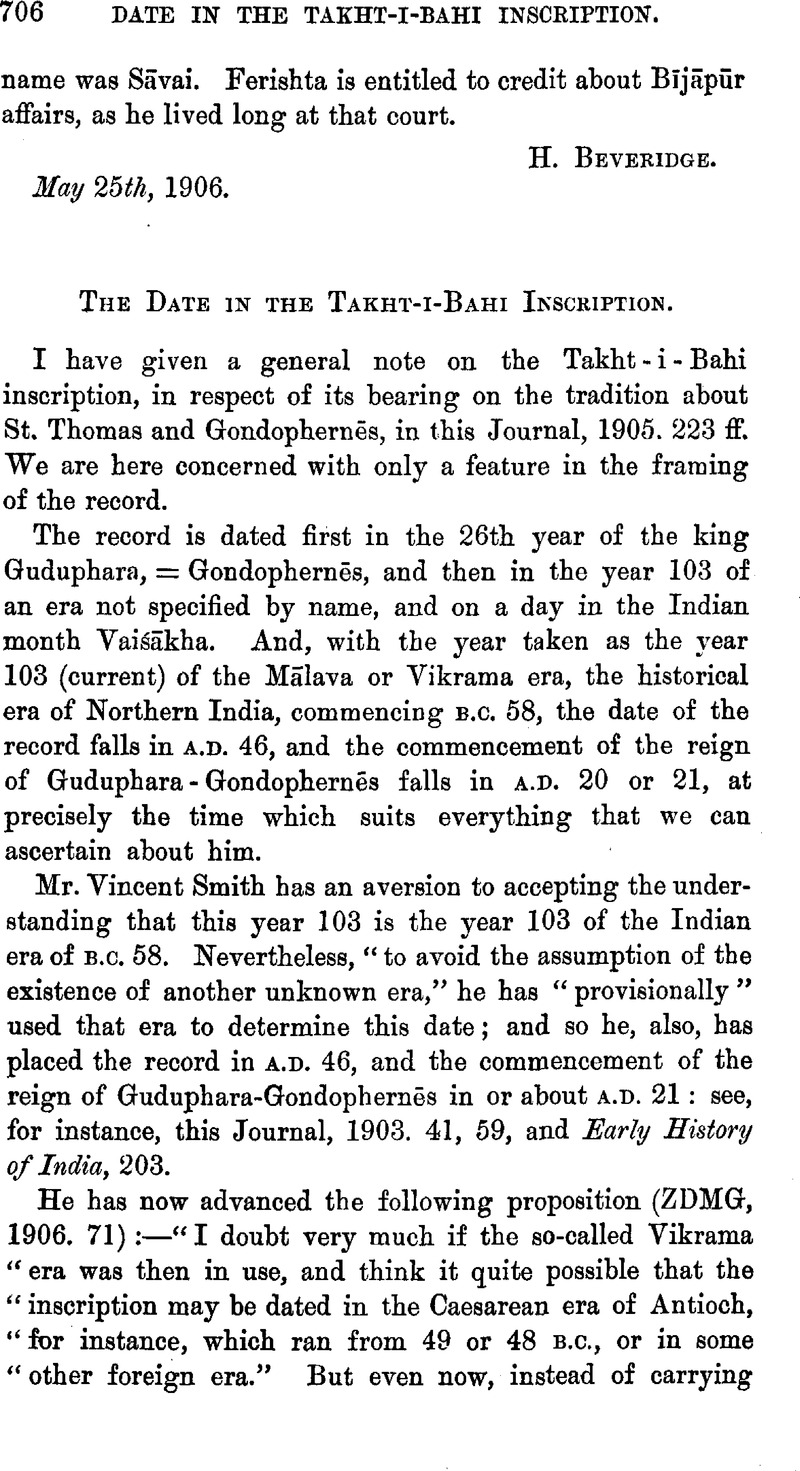No CrossRef data available.
Article contents
The Date in the Takht-i-Bahi Inscription
Published online by Cambridge University Press: 15 March 2011
Abstract

- Type
- Miscellaneous Communications
- Information
- Copyright
- Copyright © The Royal Asiatic Society 1906
References
page 707 note 1 Quoting Mr. Vincent Smith's actual words, I of course concede to him the use of the form Gondophares, in connexion with which he has said (loc. cit., 64, note 3) that my form Gondophernēs is “ not supported by authority.”
As regards authority,— he informs us that “ the name obviously is a Persian one formed like Holophernes, Sitaphernes etc.” My form of it is justified by those analogous names which he has quoted. And it is further expressly indicated by the Kharōshṭhī form Gudapharna, which he has mentioned on the same page.
The preference for continuing to use an imaginative form, “ sanctioned by usage ” which dates back to about 1841, is quite another matter. It may be classed along with the habitual use of the remarkable expression Kālī Yuga, Kālīyuga.
page 708 note 1 From other sources it would appear that the event occurred, and the era was established, just after the battle of Pharsalia in August, b.c. 48; and that, while the Syrians computed the reckoning from the autumn of that year, the Greeks threw back the initial point to a time eleven months earlier, in b.c. 49.
page 710 note 1 See the latest treatment of the record, by M. Boyer, in JA, 1904, 1. 457 ff.




